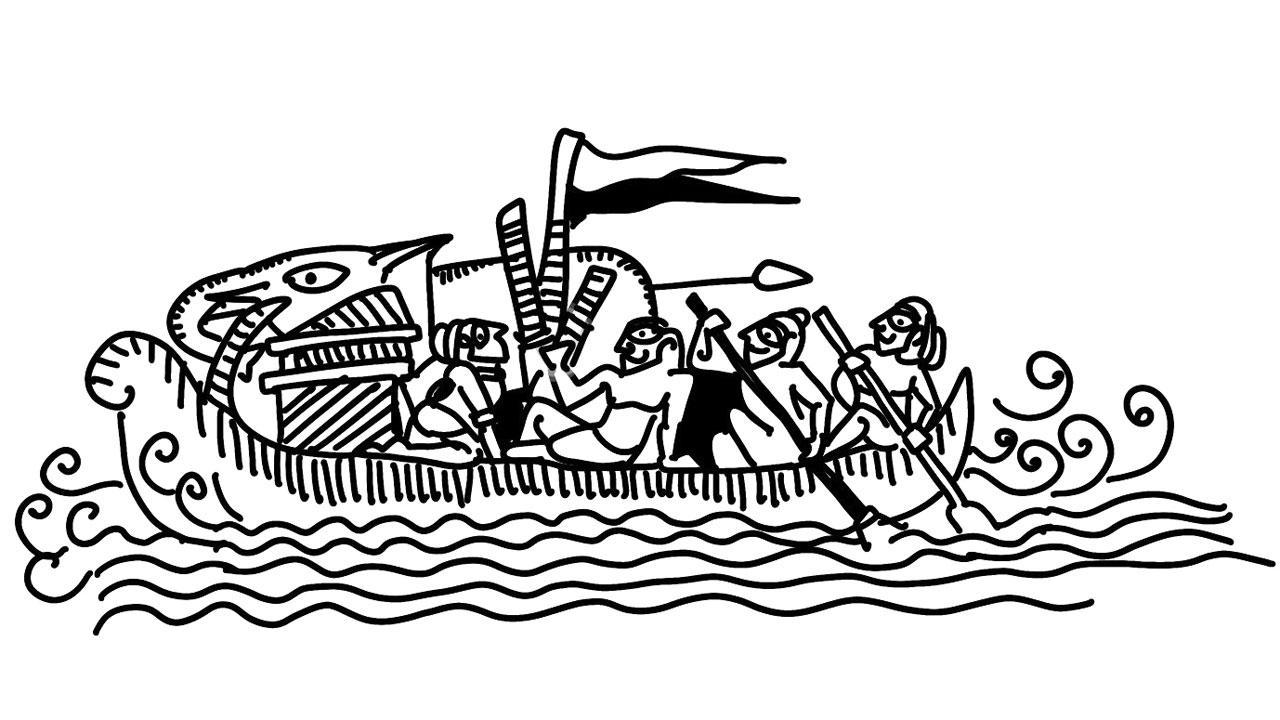Thailand and Burma were relatively more Buddhist, but everyone seemed to have been fascinated by the story of the ideal king Ram

Illustration/Devdutt Pattanaik
 Southeast Asia has two parts. The mainland and the islands. On the mainland, from West to East, are Burma, Thailand, Malaysia, Cambodia, Laos and Vietnam. The islands include Indonesia, including Java, Sumatra and Bali, and farther east, the Philippines. In ancient times, this region was once known as Suvarnabhumi, the golden lands. It was influenced by India from the east and China from the North. In mediaeval times, it came under Islamic influence as Arabs controlled the sea. Then in colonial times, under Dutch, Portuguese, French, English and Americans, it came under Christian influence, and became popular as Indo-China.
Southeast Asia has two parts. The mainland and the islands. On the mainland, from West to East, are Burma, Thailand, Malaysia, Cambodia, Laos and Vietnam. The islands include Indonesia, including Java, Sumatra and Bali, and farther east, the Philippines. In ancient times, this region was once known as Suvarnabhumi, the golden lands. It was influenced by India from the east and China from the North. In mediaeval times, it came under Islamic influence as Arabs controlled the sea. Then in colonial times, under Dutch, Portuguese, French, English and Americans, it came under Christian influence, and became popular as Indo-China.
ADVERTISEMENT
Hindu influence began around 1,700 years ago, around the 3rd century CE. Hindu influence waned after the 12th century CE, but Buddhist influence continued. Ships sailed from the eastern coast of India to Southeast Asia taking advantage of monsoon winds. Earlier people thought that it was merchants who took Buddhism to southeast Asia, but now it is clear that a major export from India were Brahmin “statecraft consultants”, who helped local kings identify themselves with Shiva, Vishnu, Buddha and Bodhisattva.
While China saw Southeast Asia as a tributary state, ideas and institutions spread from India and gave rise to kingdoms known as Mandala-states, which were built around a charismatic leader and his grand city. His power radiated in concentric rings. He was identified initially with Hindu gods like Shiva and Vishnu and later Buddha. This was seen in the Champa kingdoms of Vietnam, the Khmer kingdoms of Cambodia, and in Srivijaya kingdoms of Indonesia. Thailand and Burma were relatively more Buddhist, but everyone seemed to have been fascinated by the story of the ideal king Ram.
Memory of the maritime connection manifests as the festival known as Bali-Jatra or voyage to Bali in Odisha. A major component of this is the boat festival (Boita Bandana), when boat-shaped effigies are placed on water bodies. This is remarkably similar to the Masakapan Ke Tukad festival of Bali and to the Loi Krathong festival of Thailand, where also model boats are ritually set afloat.
The oldest material evidence comes from Vietnam where there are ruins of Brahma, Vishnu and Shiva temples. In Cambodia, we have images of Shiva-linga, four-armed Vishnu and then four-armed images of HariHara, indicating a merger of Shiva kings who conquered lands where Vishnu was first revered and vice versa. These images are older than the Angkor Wat complex. In Java, we have the great Hindu trinity temple at Prambanan, dated to the 9th century. Here, there are panels showing scenes from the Ramayana and panels showing Krishna and Balarama fighting demons and monsters.
At Angkor Wat, Cambodia, in the 12th century, there are huge panels showing the war of Ram and Ravana, Pandavas and Kauravas, Krishna and Bana, Devas and Asuras. A popular motif is of amruta-manthan. And even more popular is the image of Garuda fighting the Nagas. There are images of Durga and Lakshmi, but the mood is more military (vira) rather than romantic (shringar). The only suggestion of erotic is the profusion of apsara images.
This influence of India in Southeast Asia stopped as soon as Indians started to believe that travelling over the sea leads to loss of caste. So Indian merchants outsourced all sea-trade to Arabs, and India became a distant memory in those faraway lands.
Devdutt Pattanaik writes and lectures on the relevance of mythology in modern times. Reach him at devdutt.pattanaik@mid-day.com
 Subscribe today by clicking the link and stay updated with the latest news!" Click here!
Subscribe today by clicking the link and stay updated with the latest news!" Click here!







